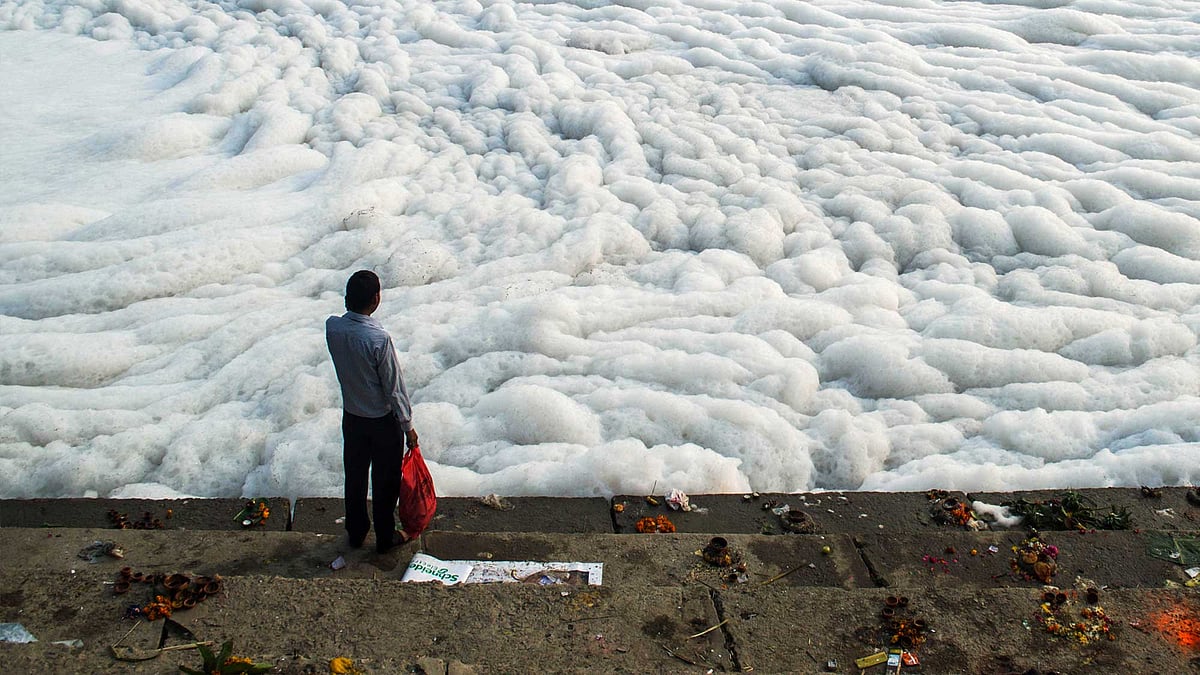In Pictures: Yamuna Was Polluted Even Before Sri Sri’s #WCF2016
With the debate around Yamuna back in news, check these photographs of the river and the pollution that threatens it.

advertisement
River Yamuna is in the news again. Sri Sri Ravi Shankar’s ‘World Culture Festival’, which is being held on a vast tract of the Yamuna floodplains, has got environmentalists up in arms against Sri Sri’s ‘Art of Living’ foundation. The National Green Tribunal (NGT) intervened briefly, raised a few essential questions, and slapped a fine. But history is witness to how many NGT orders have drowned in this dirty, frothing drain, often referred to as a river.
I documented the Yamuna in 2014-15 and got the chance to observe the river quite closely. This story is built on those observations and photographs.
The Yamuna is both a divine entity and a sewer. During festivities, hundreds and thousands of devotees congregate along the banks of Yamuna to pray, shower their offerings (often non-biodegradable ones), see it float on the black river, and leave. They’ve impressed the Gods, they believe.
Added to this is the ‘untreated’ sewage that flows from 18 drains in Delhi. In what constitutes only 4.96% of the river’s course, Delhi adds over a 1,000 litres of waste, every day. This has virtually killed the river. Yamuna has one of the lowest levels of dissolved oxygen – a crucial factor to support aquatic life. It stands at 0.1 mg/litre of water in Yamuna, while the minimum bathing standard is 5 mg/litre.
In September last year, the Delhi Government, under Arvind Kejriwal’s Aam Aadmi Party, imposed a fine of Rs 5000 on ‘those spotted polluting the Yamuna’. But pollution has continued, floodplains have been encroached upon, and the status quo remains to be challenged.
After Chhath Puja celebrations every year , the river gets choked with offerings and immersions. The Quint did a coverage of the post-event scenario last year.
Check out the full video of how the Yamuna gets polluted after Chatth Puja celebrations every year:
The National Green Tribunal (NGT) banned the immersion of plastic and non-biodegradable idols in the river. This hasn’t proved to be much of a deterrent though. The idols are sometimes taken out by lifeguards, thus saving the river.
Then there are a few souls, who even outsource their devotion. By paying a nominal amount of 5 rupees, one can get their offerings thrown into the river, by ‘volunteering kids’. Quint Hindi reported on the issue. Check this video:
Encroachment of the river-bed has added to the pollution. Every year, during monsoons, as the water levels rise and the threat of flood surfaces, the low-settling population has to move to higher grounds.
As many as 45 industries direct their untreated toxic waste into the river. There’s an immediate need to create more sewage treatment plants which could process the water before letting it out into the river.
Because of such poisonous fluids mixing in the river, the Delhi stretch is the most toxic part of Yamuna. Experts believe that the Yamuna is virtually dead, and it would be a miracle to restore its original flow.
Until then, whatever remains of the river, the divinity may flow.
The faith in the river may take a leap.
And yes, cleaning up the river won’t be a child’s play. A committed ground action is required. Will it happen? Let’s pray to the river itself.